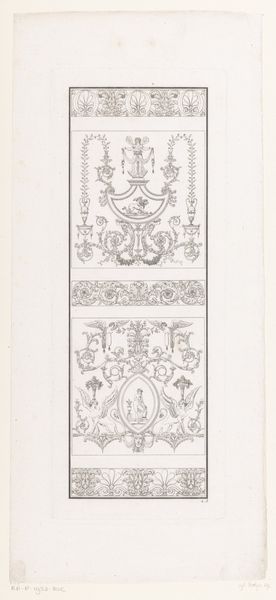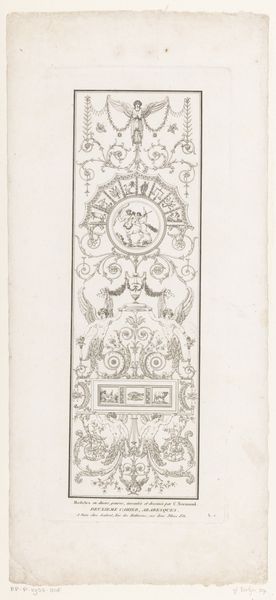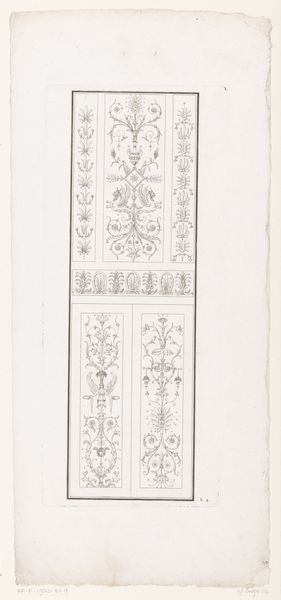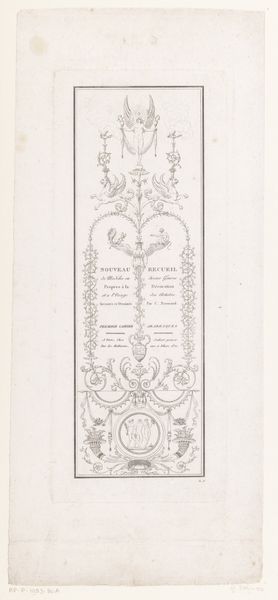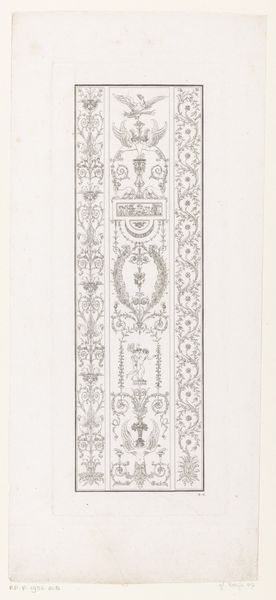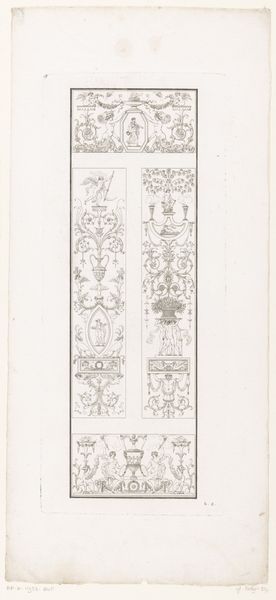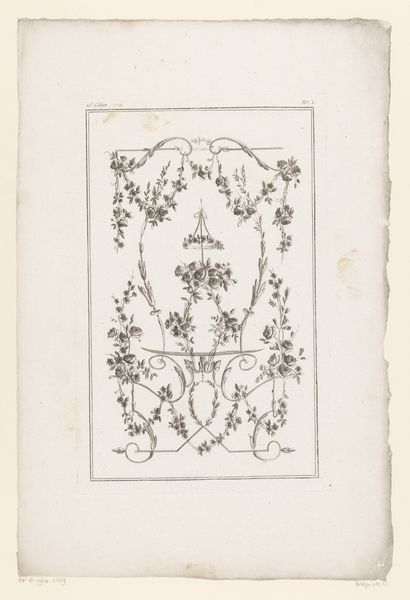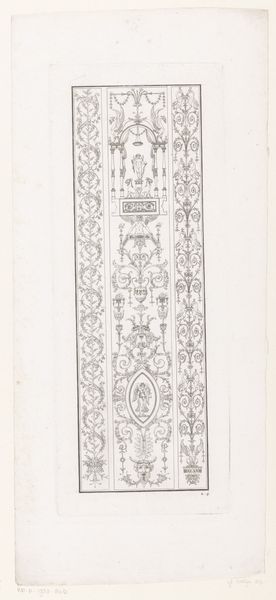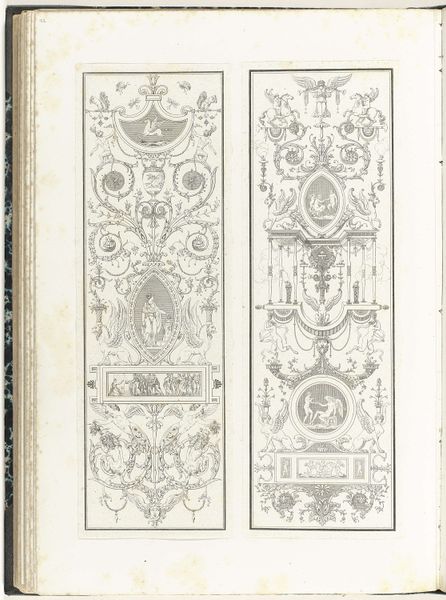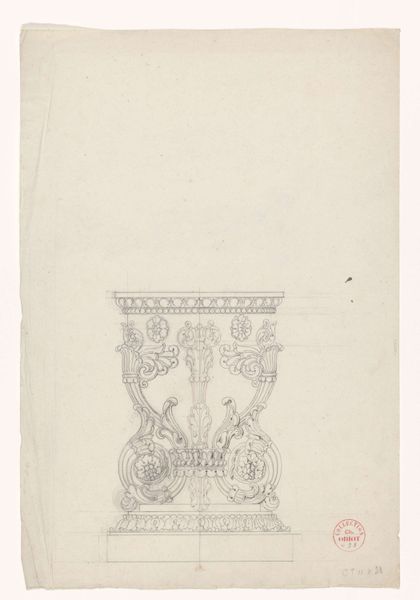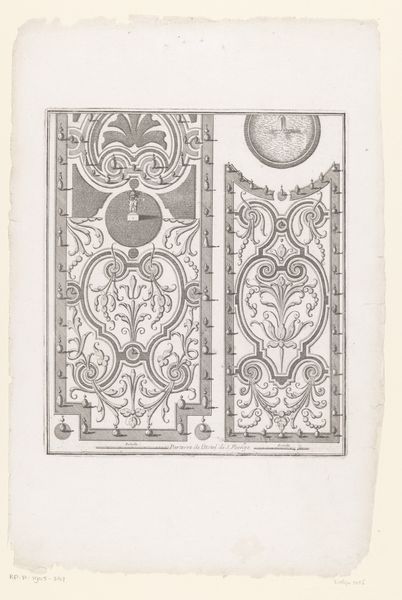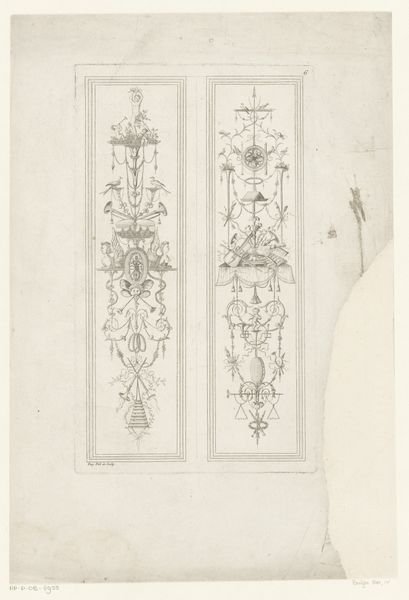
drawing, print, engraving
#
drawing
#
neoclacissism
# print
#
form
#
geometric
#
line
#
decorative-art
#
engraving
Dimensions: height 336 mm, width 142 mm
Copyright: Rijks Museum: Open Domain
Curator: This is “Arabesken met medaillon en hippocampi,” an engraving created in 1803 by Charles Pierre Joseph Normand. Editor: It strikes me as surprisingly delicate for an era often associated with grandeur. Almost skeletal, a linear ghost of classical ideals. Curator: Neoclassicism was often used as political propaganda during and after the French Revolution; there’s always an effort to show the power of the establishment, however new it might be. What do you see in these symbols, considering that history? Editor: I see forms – circles, rectangles – filled with scenes of pastoral leisure and mythological creatures, stacked vertically, like frozen narratives climbing upwards. Each vignette a contained world of aspiration. There’s an undeniable utopian bent that echoes the social reform movements, of that time Curator: The hippocampi are particularly telling. As creatures that bridge sea and sky, they represent both grounding and aspiration. Notice, too, the medallion shape—it encloses figures engaged in leisurely pursuits, alluding to a protected, ideal existence. Do you think there's an inherent tension in depicting such serenity during a period of massive social upheaval? Editor: Absolutely. It speaks to a desire for order, for permanence, in the face of chaos. The crisp lines, the idealized figures – it's all carefully constructed to project a sense of control that perhaps didn't entirely exist in the world outside the frame. Almost like propaganda. It projects ideals more than anything. Curator: Considering Normand’s other decorative prints, the imagery and geometry is evidence for this period. It presents a conscious attempt to create beauty based on older motifs while promoting order and social advancement in a turbulent post-revolutionary context. Editor: Ultimately, viewing this intricate arabesque design prompts a broader consideration of that fascinating and challenging epoch and the cultural landscape. Curator: I think it underscores that this artwork reveals lasting archetypes that shape our social imagination.
Comments
No comments
Be the first to comment and join the conversation on the ultimate creative platform.
